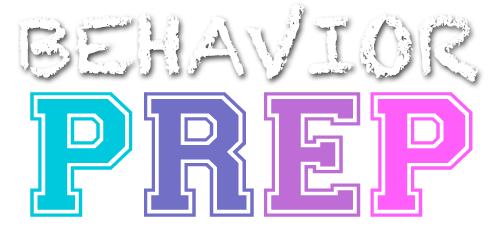H.7 Make data-based decisions about the effectiveness of the intervention and the need for modification
Making data-based decisions about the effectiveness of the intervention and the need for modification involves analyzing collected data to determine whether a behavior-change intervention is working as intended. Based on the data, a behavior analyst may decide to continue, adjust, or change the intervention to improve its effectiveness in achieving the desired outcomes.
A BCBA makes data-based decisions about the effectiveness of interventions and the need for treatment revision by carefully analyzing and interpreting the collected data. This process involves systematically reviewing the client’s progress, comparing it to the behavior change goals, and determining whether adjustments to the intervention plan are necessary. Here’s a detailed description of how a BCBA makes data-based decisions, along with examples:
Data Review
The BCBA begins by reviewing the collected data on the target behavior(s) and relevant dimensions. This includes examining graphs, summary sheets, and other visual representations of the data to gain a comprehensive understanding of the client’s progress over time.
Example: The BCBA reviews a line graph showing the frequency of problem behavior across multiple sessions. They observe the trend and any changes in the behavior’s occurrence or reduction.
Goal Progress Evaluation
The BCBA compares the client’s progress to the behavior change goals established at the outset of the intervention. They assess whether the client is making sufficient progress towards achieving those goals.
Example: If the behavior change goal is to increase the number of correct responses during academic tasks, the BCBA evaluates whether the client’s performance is consistently improving and approaching the predetermined criterion.
Statistical Analysis
The BCBA may conduct statistical analyses on the data to determine the significance of any observed changes in behavior. This can involve applying appropriate statistical tests, such as t-tests or chi-square tests, to assess the statistical significance of the data.
Example: The BCBA conducts a statistical analysis to determine if there is a significant decrease in problem behavior following the implementation of an intervention. They compare the baseline data with the intervention phase data to determine if the reduction is statistically meaningful.
Clinical Judgment
The BCBA exercises clinical judgment in interpreting the data, considering various factors such as the stability of the behavior change, the consistency of progress, and any contextual or environmental factors that may impact the effectiveness of the intervention.
Example: The BCBA considers whether the observed behavior change is consistent across different settings, with different people, or under varying conditions, to evaluate the generalization and maintenance of the behavior change.
Decision-Making
Based on the data analysis and interpretation, the BCBA makes data-based decisions about the effectiveness of the intervention and the need for treatment revision. They determine whether the intervention is producing the desired outcomes or if modifications are necessary.
Example: If the data show minimal progress towards the behavior change goals, the BCBA may revise the intervention plan by modifying the strategies, increasing the intensity of the intervention, or incorporating additional support.
Collaboration and Consultation
The BCBA collaborates with the client, caregivers, and other relevant stakeholders to discuss the data, share findings, and obtain input regarding the effectiveness of the intervention. This collaborative process ensures that decisions are made in a collaborative and informed manner.
Example: The BCBA holds a meeting with the client’s parents and teachers to review the data, discuss the progress, and collectively decide on any necessary adjustments to the intervention plan.
Documentation and Reporting
The BCBA documents the data-based decisions and revisions made to the intervention plan. They provide clear and concise reports outlining the rationale behind the decisions and communicate them to the client, caregivers, and other professionals involved in the client’s treatment.
Example: The BCBA prepares a written report summarizing the data analysis, progress evaluation, and proposed revisions to the intervention plan. The report provides a clear explanation of the data-based decisions and includes recommendations for moving forward.
By making data-based decisions, the BCBA ensures that the interventions are effective, evidence-based, and individualized to the client’s needs. Data-based decision-making allows for ongoing assessment, adjustment, and refinement of the intervention plan, maximizing the likelihood of successful behavior change outcomes.
